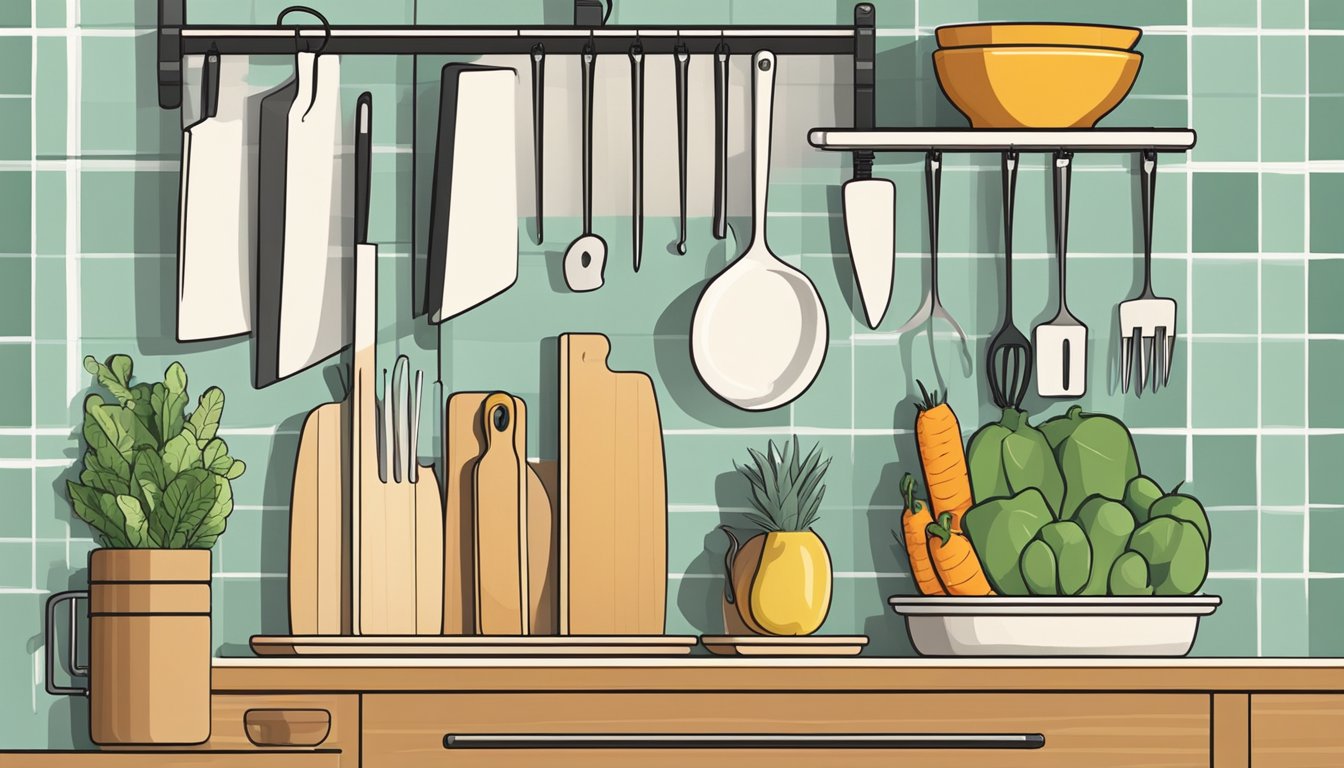Proper storage of cutting boards is essential for maintaining their quality and extending their lifespan. The best way to store cutting boards is vertically, allowing for airflow and preventing moisture buildup. This method helps prevent warping and keeps boards in optimal condition for safe food preparation.
Vertical storage can be achieved through various means. Countertop stands provide easy access and display boards attractively. For those with limited counter space, pull-out drawer organizers or over-the-cabinet door racks offer efficient solutions. Wall-mounted options, such as towel racks or hooks, can also be effective for storing cutting boards while keeping them within reach.
Regardless of the chosen storage method, it’s crucial to ensure cutting boards are thoroughly dried before putting them away. This practice prevents moisture-related issues and helps maintain the integrity of the board material, whether it’s wood, plastic, or another material. By implementing these storage techniques, home cooks can ensure their cutting boards remain in top condition for years to come.
Understanding Cutting Board Types
Cutting boards come in different materials, each with unique properties and maintenance needs. The two most common types are wooden and plastic cutting boards, each offering distinct advantages for different kitchen tasks.
Wooden Cutting Boards
Wooden cutting boards are prized for their durability and natural beauty. They are gentle on knife edges, helping to maintain blade sharpness. Hard woods like maple, walnut, and cherry are popular choices due to their density and resistance to scarring.
Wooden boards require regular oiling to prevent warping and cracking. They have natural antibacterial properties but can absorb moisture and odors if not properly cared for. These boards are ideal for cutting bread, vegetables, and fruits.
Wood boards come in various styles, including end-grain and edge-grain. End-grain boards are more expensive but offer superior durability and self-healing properties.
Plastic Cutting Boards
Plastic cutting boards are lightweight, affordable, and easy to clean. They are non-porous, which makes them resistant to bacteria and odors. These boards are available in various colors, allowing for color-coding to prevent cross-contamination.
Plastic boards are dishwasher-safe, making them convenient for quick cleanup. They are softer than wood and can develop knife marks over time, which may harbor bacteria if not properly sanitized.
These boards are best suited for cutting raw meat and poultry due to their non-porous nature. They can be easily replaced when worn out, making them a practical choice for busy kitchens.
Fundamentals of Cutting Board Storage

Proper storage practices extend the life of cutting boards and maintain their quality. Two key aspects are ensuring adequate airflow and keeping boards easily accessible.
Importance of Airflow
Airflow is crucial for cutting board storage. Wooden boards especially need to breathe to prevent warping and mold growth. Store boards vertically with space between them. This allows air to circulate freely, reducing moisture buildup.
Avoid stacking boards flat on top of each other. This can trap moisture and lead to bacterial growth. Instead, use a rack or dividers to keep boards separated. In cabinets, leave the door slightly ajar periodically to promote air circulation.
For plastic boards, airflow helps prevent odors and stains. Hang boards on wall-mounted racks or store them in well-ventilated drawers. This keeps them dry and ready for use.
Accessibility and Convenience
Easy access to cutting boards encourages regular use and proper care. Store boards near food prep areas for quick retrieval. Consider installing pull-out drawer organizers or vertical dividers in cabinets.
Wall-mounted racks offer visibility and save counter space. Place frequently used boards at eye level for effortless access. For less-used boards, higher shelves or cabinet tops work well.
Drawer storage keeps boards protected from dust. Use drawer organizers to prevent shifting and damage. Label drawer fronts to quickly locate specific boards.
Store boards by size or material for efficient selection. Keep smaller boards in front for easy grabbing. This organization saves time and reduces clutter in the kitchen.
